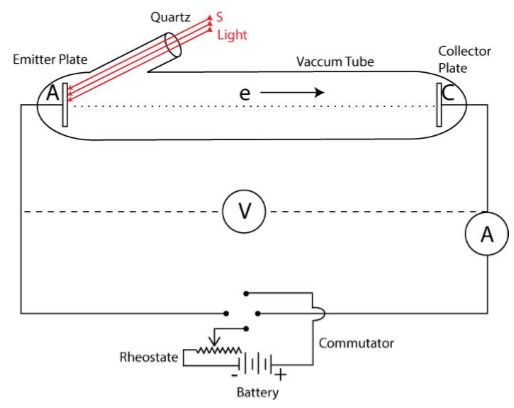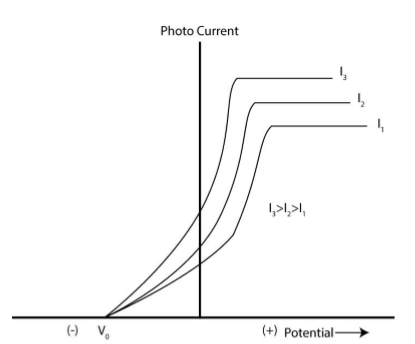Hellwach Lenards Potential Current Graph
Description:

Frequency and intensity of incident light, both are kept constant.
The positive potential of collector plate is gradually increased while measuring the resulting photo-electric current each time.
It is can be observed that photo-electric current increases with increase in positive potential.
At some stage for certain positive potential of collector, all the emitted electrons are collected by the collector and photo-electric current becomes maximum.
If we continue to increase the positive potential of collector, the photo-electric current does not increase. This maximum value of photo-electric current is called saturation current.
The commutator is used to reverse the direction of current and now negative potential is applied to the collector with respect to the emitter.
The negative potential of collector is gradually increased till the photo-electric current becomes zero.
The minimum negative potential Vo given to the collector for which photo-electric current stops or becomes zero is called cut-off or stopping potential.
No matter how much we increase the intensity of light, no photo-electric current will be able to flow after cut-off potential.

All the photo-electrons emitted from metal surface do not have same energy.
Photo-electric current becomes zero when the stopping potential is sufficient to repel even the most energetic photo-electrons, with the maximum kinetic energy, so that
1/2 mv2max = eVo
Where,
vmax = Maximum velocity of photo-electron.
m = Mass of electron.
e = Charge on electron
Vo = Stopping potential.

